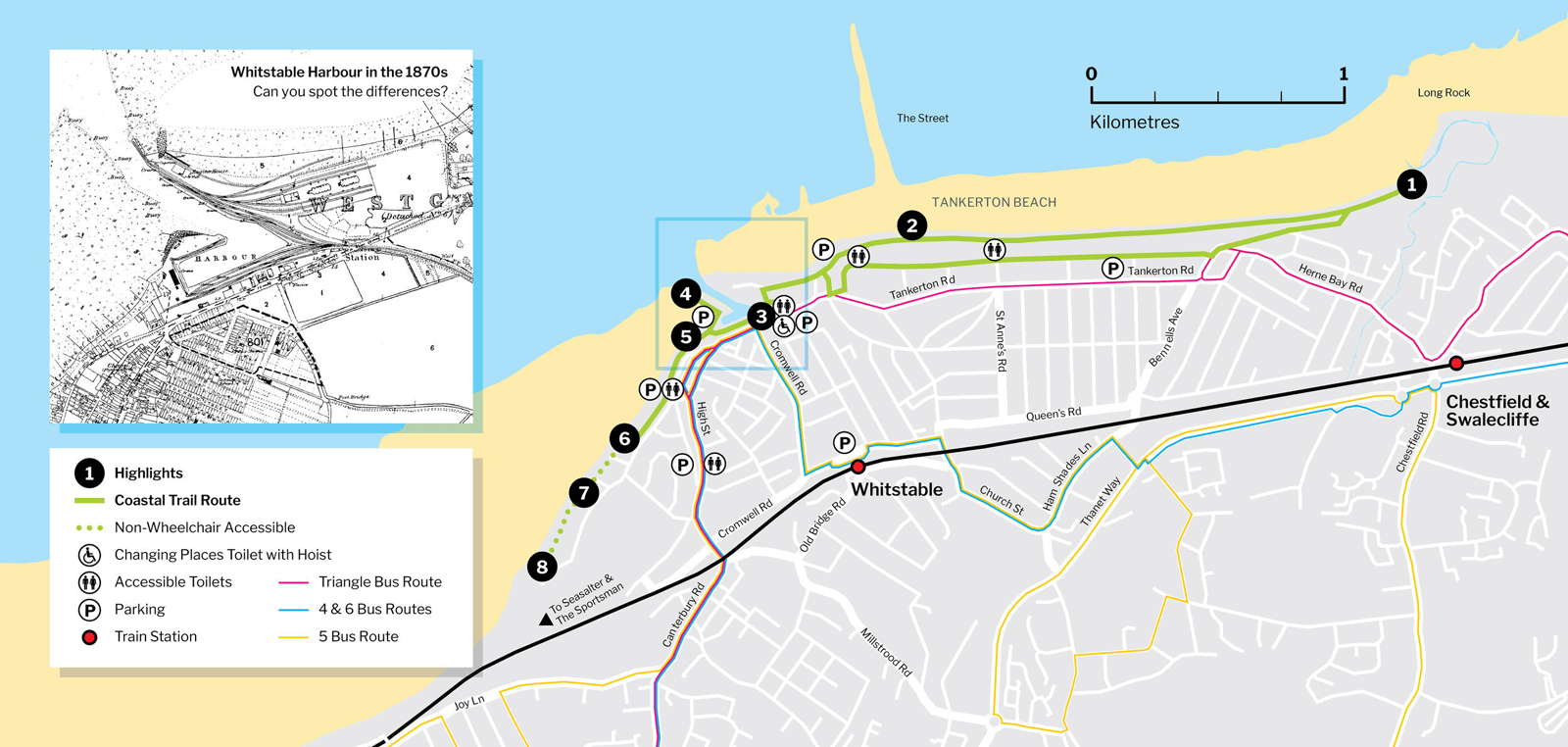Archaeology
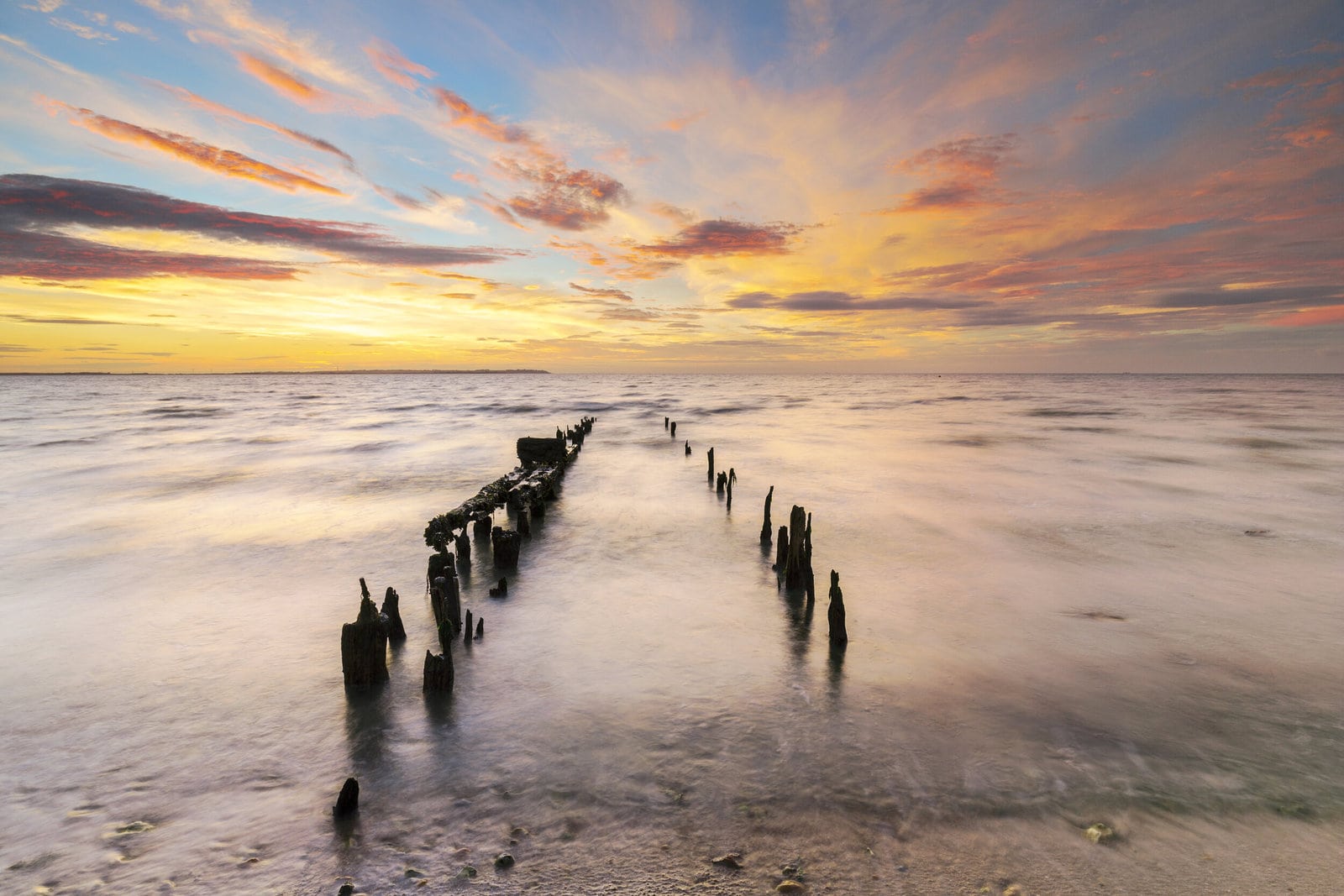
The coast near Whitstable has been inhabited for over 10,000 years, with flint artefacts found dating from between about 10,250 and 5,500 years ago when sea level was probably 10m lower than now. Artefacts of Bronze Age, Iron Age and through to the Roman Age have all been found.
Geology & Environment
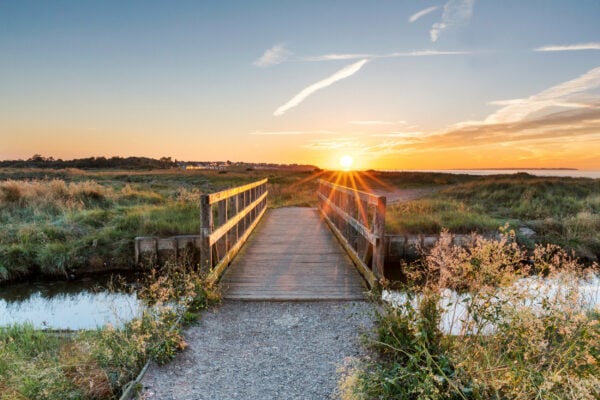
The North Kent coast is formed predominantly of London Clay. To the west of Whitstable it is covered by salt marsh, created as sea levels rose over the last 6000 years.
Whitstable’s beach is shaped by longshore drift carrying shingle westwards. The groynes are there to control this flow of material. The beaches they protect help to break the force of the waves during winter storms which used to flood the town!
Significantly, two sections of the Trail are Sites of Special Scientific Interest: Swalecliffe and Tankerton Slopes. In addition the coastline from the Harbour to Seasalter, extending to the Seasalter Levels and Graveney Marshes, forms part of the Swale Marine Conservation Zone.
Ecology & Wildlife
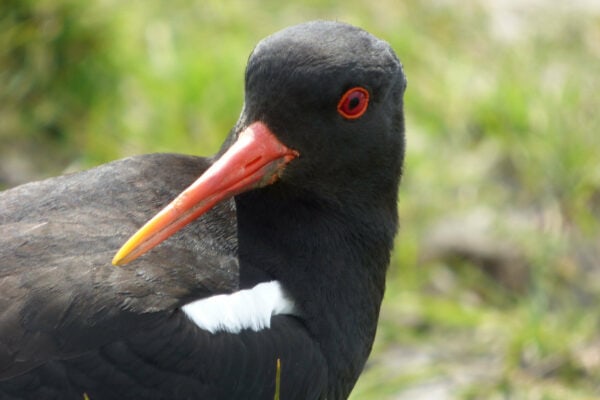
A large number of animals, birds and plants can be seen along the coast, many on the beach, although what can be seen will depend on the season. Two birds that are present all year in the harbour and on the foreshore are the Oyster Catcher and Turnstone. Plant-wise, you may see the Yellow Horned-Poppy, a specialist of coastal shingle habitats, or Hog’s Fennel.
Animal life in the sands and muds is abundant; over a hundred species live in or on it which range from worms to large shellfish and you can often find them at low tide. If you see the piles of neatly curled sand, it’s from the ragworm which lives in a burrow in the mud reaching out to feed on the nutrient-rich sediments.
Please do not pick the flora; it forms part of a delicate ecosystem and Site of Special Scientific Interest.
History & Industry

The more recent history includes evidence of a Copperas industry, fish traps, an Anglo-Saxon boat, a Tudor ship wreck, and a range of WW2 military defence works. It also includes what some call the last armed battle against an enemy that took place on British soil – The Battle of Graveney Marsh.
A plaque explaining more about the Copperas industry can be found on the trail at Tower Tea Gardens, opposite Whitstable Castle (see map). Thames barges are still seen afloat on The Swale and The Greta is berthed on the trail, in the harbour, and open for day sailing trips.
Maritime Heritage
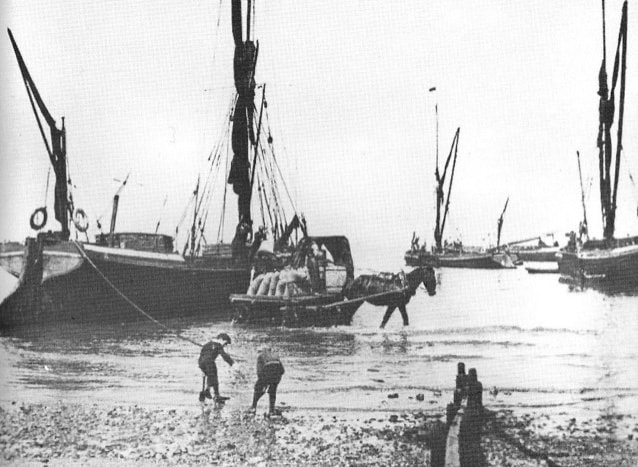
Whitstable supported not just a large oyster fleet, but also a burgeoning ship building industry. All along the trail, from Highlights 3-8, yards were making and repairing vessels during a time when ships were vital for transporting goods nationally and internationally.
In this period, before deep water vessels, Whitstable harbour was one of the UK’s largest and busiest ports.


